If you’re looking for the best pocket WiFi in Japan, then I have a secret to tell you. Based on what we’ve discovered, they’re ALL the same. Japan Wireless, Sushi WiFi, Fox WiFi, PuPuRu WiFi, Ninja WiFi, Global Advanced Communication, eConnect Japan, etc. — they are ALL from Softbank. Same speed, same features, same ISP (Softbank). Literally, the only difference is the price! So we’ve narrowed down the results to the three best-priced plans.
Key Takeaways:
- The best and cheapest portable WiFi Hotspots rental in Japan is Sakura Mobile Pocket WiFi. They offer a 4G LTE unlimited data hotspot plan. Click here to reserve and for more information.
How to Get Wireless Internet Service in Japan
Japan has many wireless internet service providers (ISP) and the most popular are NTT DoCoMo, Softbank, and au by KDDI. These three are the local ISP giants and provide reliable internet connections throughout Japan.
However, getting an internet service directly through them is NOT possible for short-term tourists. As a result, you will need to rent a portable hotspot (known as pocket WiFi in Japan) or buy a Japanese data SIM card.
But we’re going to focus on portable hotspots because they’re extremely easy to get in Japan and don’t have phone incompatibility issues.
Booking Ahead vs On Arrival
From our experience, you should reserve your portable WiFi it at least 3 business days before your arrival in Japan. That way, it will be waiting for you at the airport or your hotel. It’s more expensive if you get it on your arrival at the airport kiosk, and there’s NO guarantee you’ll get one because they sell out, especially during peak seasons.
ABOUT “POCKET WIFI”: You may see the term “pocket WiFi” being used by negligent blogs and some WiFi rental companies in Japan. Pocket WiFi is a registered trademark of Softbank.
So any WiFi rental company using the term pocket WiFi for their portable hotspot router cannot be technically called “Pocket WiFi” if it uses an NTT DoCoMo or au by KDDI network. FYI.
Here are some tips & advice our readers and clients have found helpful for first-time travel to Japan:
- Best type of luggage for Japan travel
- The complete Japan travel checklist
- Important apps to download for your trip to Japan
- Average cost of Japan vacation: A detailed expense breakdown
- Things to know before traveling to Japan
- The Best of Japan in 10 Days: The “ideal” itinerary for first-timers
Why rent a portable WiFi in Japan?
Without the internet in Japan, all of these things become MUCH more difficult:
- Navigating to and from your hotel or accommodation.
- Utilizing the train, bus, and subway systems.
- Communication with Japanese locals.
- Navigation in general (Japan has hundreds of unnamed streets).
Relying on free and unsecured public hotspots poses security risks and it’s a hassle to find them while you’re trying to enjoy your time sightseeing. If you are staying at an Airbnb, their connection is not reliable. The previous occupants may have used up all the data; which happened to us every time. So having reliable internet access while traveling in Japan is important.
Portable WiFi vs. Data SIM Cards: Which is better?
Data SIM card is cheap, but make sure your phone is unlocked and it’s compatible. SIM cards also don’t often allow you to tether to other devices such as laptops.
To help you decide, here’s a comparison:
| Portable WiFi device | Data SIM Cards | |
|---|---|---|
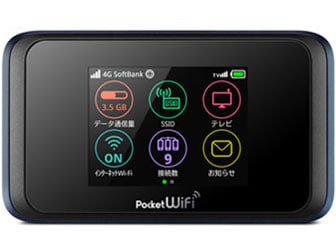 | 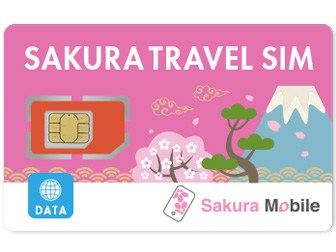 | |
| Usability | Can be connected to any device that supports WiFi. | Phone and some tablets only. |
| Battery | Needs to be charged to stay connected. | No charging is required. |
| Setup | Can be used right away. | Needs to be set up correctly. |
| Shareability | Can be shared with multiple devices. | Cannot be shared or tethered. |
Pickup and Return Considerations
When ordering your pocket WiFi online, consider how you want it to be picked up and returned. Most rental companies have 3 convenient pickups and return options:
- Airport
- Hotel delivery
- WiFi company’s office (usually in Tokyo)
Airport and hotel pickups (recommended): Double-check the opening hours of the rental company’s kiosk at the airport and see if it aligns with your arrival time. If you’re arriving in Japan outside of the kiosk opening hours, then it’s best to choose the hotel delivery pickup option.
Office pick-up: You may encounter a rental company that has a physical office in major cities like Tokyo. You need to take note of their opening and closing hours and be at least familiar with how to get to their office. I don’t recommend this option because going to their office is going to be an additional cost for you.
Returning: If you through the airport on your departure date, you again need to check their operating hours. Or you can choose the post office box return option. In my experience, it’s more convenient to return the device through a post office box as they’re practically everywhere in Japan.
NOTE: Staying at an Airbnb? Unfortunately, WiFi rental companies will not generally deliver to an Airbnb accommodation. This is because most Airbnb hosts don’t want to deal with picking up the package and you might end up not getting it.
3-Step Guide to Choosing the Best Pocket WiFi for You
Step 1: Assess what kind of user you are.
Many WiFi rental companies in Japan like to tout their pocket WiFi by flaunting their pricing along with the term “unlimited” and “fast” data speed. But the real deal here is how much data you typically use in a day.
So which are you?
- Heavy data user – someone who watches videos, uploads multiple photos/videos on social media, and plays online video games while traveling to Japan.
- Casual or light data user – someone who just uses Google maps and browses information about Japan, as needed.
Heavy data users
For example, my husband is a heavy internet user (super heavy). He will probably consume 2-3 GB a day just watching Youtube videos and uploading photos on our social media account. For a user like him, a pocket WiFi with at least 10-20GB of data throughout his stay won’t fail him. However, you may need to pay considerably more for that much data.
If you have kids who watch videos to entertain themselves while traveling in Japan, you’re also on the heavy user side. Plus, since you’re a family, you are probably sharing the connection through that device.
So you’ll probably need more GB data to survive your trip.
Casual data users
If you’re like me, who’s a casual user, who only looks at my phone to use Google Maps and navigate the train, or find an interesting restaurant to eat at, or read ebooks, then you don’t need super high GB data.
You can get away with an unlimited plan or 1GB a day or even less might even work for you. And it is usually way cheaper too.
Step 2: Get the router model that suits your needs.
We created this comparison chart of common wireless routers that can be rented in Japan. Look at the specifications carefully and see which one best suits your needs.
| 601HW | 501HW | HWD11 | 303ZT 305ZT | FS030W | Aterm MR04LN | Aria 2 | |
|---|---|---|---|---|---|---|---|
| Wireless Router Model | 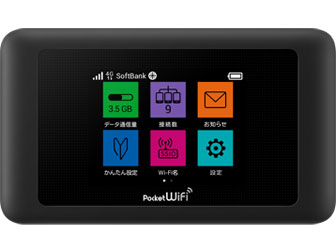 |  | 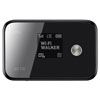 | 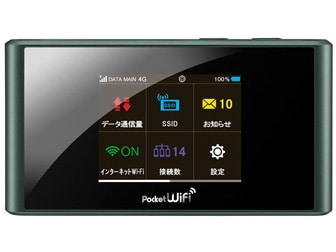 | 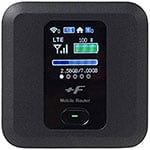 | 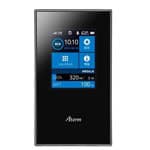 | 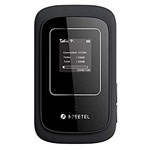 |
| Brand | HUAWEI | HUAWEI | HUAWEI | ZTE | Fujisoft | NEC | Freetel |
| Rented by | Ninja | PuPuRu, eConnect Japan, H.I.S, and Japan Wireless | PuPuRu | Ninja | LightPocket and Sakura Mobile | Genki Mobile | Sushi Wi-Fi |
| Battery capacity | 2,400mAh | 3,000mAh | 3000mAh | 2,700mAh | 3,060mAh | 2,100mAh | 2,300mAh |
| Continuous Communication Time (approx.) | 6-8.5 hours | 10 hours | 9 hours | 9 hours | 20 hours | 12 hours | 17 hours |
| Network Speed | 4G LTE/3G | 4G LTE/3G | 4G LTE/3G | 4G LTE/3G | LTE/3G | LTE/HSPA+ | 4G LTE |
| Downlink / Uplink (best-effort speed) | 187.5Mbps / 37.5Mbps | 187.5Mbps / 37.5Mbps | 75Mbps / 25Mbps | 187.5Mbps / 37.5Mbps | 150Mbps/50Mbps | 150Mbps/50Mbps | 150Mbps/50Mbps |
| WLAN version | IEEE 802.11 a/b/g/n/ac | IEEE 802.11 a/b/g/n/ac | IEEE 802.11 b/g/n | IEEE 802.11 a/b/g/n/ac | IEEE 802.11 a/b/g/n/ac | IEEE 802.11 a/b/g/n/ac | IEEE 802.11 a/b/g/n/ac |
| Weight | 135g | 150g | 136g | 150g | 128g | 111g | 110g |
Step 3: Start comparing plans and prices.
| PuPuRu | Ninja | eConnect Japan | H.I.S | Japan Wireless | |
|---|---|---|---|---|---|
| Plans and the router model (excl. taxes and/or shipping fee) |  501HW (SoftBank) Unlimited: ¥500 per day  HWD11 (au by KDDI) Unlimited: ¥900 per day |  303ZT (SoftBank) Unlimited: ¥900 per day ¥680 per day if booked through Voyagin. ¥7,000 for 11-30 days (flat fee) if booked through Veltra.  601HW (SoftBank) 1GB/day: ¥800 per per day |  501HW (SoftBank) 1GB/day: ¥980 per day 50GB: ¥5,080 per day 25GB: ¥3,350 per day |  501HW (SoftBank) Unlimited: starts at ¥2,500 minimum 3 days rent |  501HW (SoftBank) Unlimited: starts ¥4,266 minimum 2 days rent |
| Taxes and fees | 10% + Free shipping | 10% + Free shipping | 10% + ¥790 shipping | Taxes incl. | 10% + ¥500 shipping |
| Simultaneous Connections | Up to 10 devices. | Up to 5 devices. | Up to 10 devices. | Up to 10 devices. | Up to 10 devices. |
| Bonus | ✕ | ✕ | - Free battery charger - Free 10GB on their 1GB plan | ✕ | Free battery charger |
| Pickup and return options | - Airport - Hotel - Post office box | - Airport - Company office | - Airport - Post office - Hotel | - Company office pick up and return only | - Airport - Post office - Hotel |
| LightPocket | Genki Mobile | Sushi Wi-Fi | Sakura Mobile | |
|---|---|---|---|---|
| Plans and the router model |  FS030W (SoftBank & NTT DoCoMo) Unlimited: starts at ¥3,350 minimum of 5 days rent 500MB/day: starts at ¥3,000 minimum of 5 days rent 350MB/day: starts at ¥2,620 minimum of 5 days rent View all plans and customizable plans here. |  MR04LN (NTT DoCoMo) 1GB/day: ¥300 per day 2GB/day: ¥500 per day |  Aria 2 (SoftBank) Unlimited: ¥299 per day |  FS030W (SoftBank) 300MB/day: ¥3,700 minimum of 3 days rent 600MB/day: ¥4,450 minimum of 3 days rent 3G/day: ¥6,100 minimum of 3 days rent |
| Taxes and fees | 10% tax + ¥540 shipping | 10% tax + free shipping + ¥3,000 activation fee | 10% tax + ¥1,000 shipping + ¥2,999 activation fee | 10% tax + free shipping |
| Simultaneous connections | Up to 10 devices. | Up to 5 devices. | Up to 10 devices. | Up to 4 devices. |
| Bonus | ✕ | - Free battery charger - + 200kbps capping after 1GB exceeded | ✕ | ✕ |
| Pickup and return options | - Airport - Hotel - Post office box | - Airport - Post office box | - Airport - Post office - Hotel - Company office | - Airport - Hotel - Post office box |
Bottom Line
Based on our test, PuPuRu and Ninja WiFi connection speed were outstanding and we never experienced any downtime. But that’s because we used it casually as it’s intended it to be.
We’d like to think that their unlimited plan is still capped somehow. But, at the time of writing, both pocket WiFi rental companies, so far, are the cheapest WiFi hotspot for rent in Japan for short term stays (10 days or less).
In terms of value for long-term use, we found that Ninja WiFi offers the cheapest plan if you’re renting the hotspot device for 11-30 days because of the flat-rate price of ¥7,000.
It says on their website that they offer unlimited data, however, based on our test and usage, the speed was average.
We like eConnect Japan’s full transparency and full disclosure of their plans and hotspot specifications. They’re the only company that does that.
Their basic 4G plan has 1GB data per day and comes with free 10GB data (11GB total) which is perfect for heavy data usage like watching videos or playing video games.
Plus, their service comes with free Power Bank mobile charger, and you can’t beat that feature set at its low price.
| WiFi Plan | Price | Reserve | Pickup options | Usage | Great value for |
|---|---|---|---|---|---|
| PuPuRu WiFi | ¥500 per day | Check Current Price | Most airports throughout Japan | Casual and unlimited | 1 to 10 days of travel |
| Ninja WiFi | ¥680 per day | Check Current Price | Most airports throughout Japan | Casual and unlimited | 1 to 10 days of travel |
| Ninja WiFi | ¥7,000 flat fee | Check Current Price | Most airports throughout Japan | Casual and unlimited | 11 to 30 days of travel |
Unlimited isn’t really “unlimited”
We’re not against WiFi companies that use the term “unlimited” for their WiFi rental plans. But, if they’re going to use it, they might as well indicate the Fair Usage Policy (FUP) on their websites. After all, the internet is a shared network environment and how you use it affects other internet users.
If a provider says “unlimited,” then that doesn’t mean it’s “ultra-fast speed and unlimited all the time.” It only means that you won’t lose the connection and can use the internet in an unlimited manner. However, there will be either data capping or bandwidth throttling imposed by the network provider (bandwidth throttling is when an ISP intentionally slows down the internet connection speed of a device).
With Fair Use Policies, ISPs will significantly reduce the download and upload speeds of a user who has passed their allotted data limit to ensure that others using the same network are not affected by heavy internet users. Because of this, a wireless plan at 500MB a day might be faster than an “unlimited” plan.
Caring for your portable device
For those who like to prepare for the worst, you can consider adding gadget insurance offered by the provider during the booking process to protect yourself if the device somehow gets broken.
That said, it’s usually an additional ¥300-¥400 per day, which is quite expensive on top of your mobile WiFi cost. So it’s up to you.
If you opt to go without it, then make sure to always keep your portable WiFi in a safe place inside your bag or backpack, and package it appropriately when returning it through a post office box.
Otherwise, you have to deal with the replacement fee if you lose or damage the device, which can be around ¥25,000-¥45,000!
Lastly, don’t use too much internet…
Remind yourself that you’re in Japan!
That it is much more enjoyable to put your phone down and just savor your time and the Japanese culture around you.
Try and keep your usage to navigation and photography, rather than spending your vacation glued to your phone.
Also, using your mobile phone near priority seats inside buses and trains is actually considered rude, so don’t be that guy/gal (click to read our article about Japanese etiquette: Do’s and don’ts for first-time tourists).

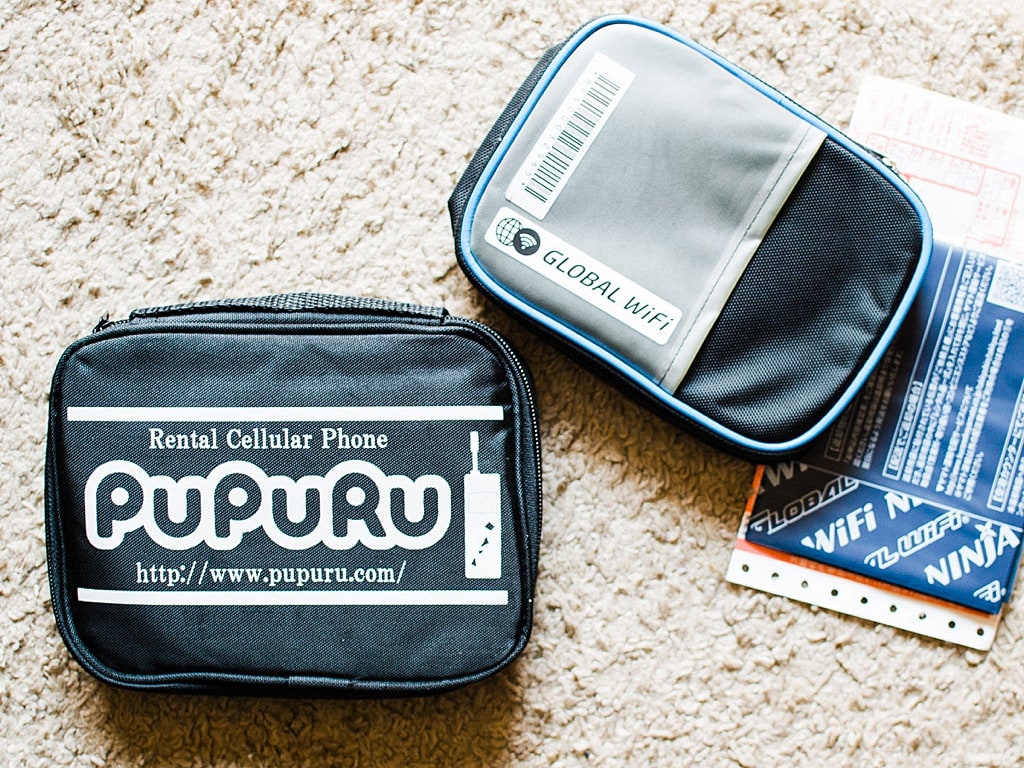
Hi,
I still cannot choose which pocket wifi to get.
I will landing in Haneda and stay 32 days. March 8 – April 8.
I am also going to Kyoto and Osaka for hanabi.
Also to Kamakura, Sagamihara, and Shonan area.
My host may take me other places.
I am a HEAVY user. Also, nobody seems to be mentioning that translation apps (iPhone) will be used mostly ONLINE (some have offline, but not counting it). Translation will be used CONSTANTLY.
At night I will probably watch movies with US subscriptions, like AppleTV+.
So I want “unlimited”, fast, and long battery.
I also heard that Docomo is the better ISP.
Which one should I get?
Thanks!
Hi Ted,
Pocket Wi-Fis are not really meant for heavy data usage like movie streaming. You can, but most likely at the end of the day your speed will slow down. I think it’s best if you will stay at a business hotel that has free Wi-Fi.
Do you have security concern about the Huawei devices breaching/gathering personal information? Most Japan pocket wifi seems to favor that brand name.
FoxWifi – AVOID – miss leading website – un-trusted provider
Their web site clearly state “CANCELLATION POLICY
You can cancel your order and get refunded anytime until we actually ship your package out. (Approximately three days before the pickup date)”
I contacted them 2 weeks previous shipping date, as my flight from Korea was canceled due to COVID-19 and they denied my reimbursement !
As a customer you have a choice to choose a trusted provider !
Anyone as similar experience ?
I am sorry this happened to you. I have not heard of FoxWifi. I checked their website I knew it immediately to not book a pocket WiFi with them, they seem to be very dodgy, they have no About us or Company Profile,
WOW. I wish I had done my research. I fell into the trap of one website and ordered Japan Wireless. GOD, I regret the price knowing that there’s fare more CHEAPER WiFi in Japan! Anyway, I had the BEST time in Japan and I’m definitely visiting again! BTW, I love your blog!!
Hi Baby Joy,
I am so happy you found my blog!! Oh yes, I hate those websites that are one-sided, they did great in marketing though. Now you know where to rent the next time you visit! I miss Japan so much and glad to know you had a blast!
Did the Japan Wireless work well?
Can’t see the JPY 7,000 flat rate plan on Ninja WiFi website. Probably they have discontinued it. Their rate for unlimited plan is now JPY 900 per day, which is quite expensive compared to others.
Hi Alex,
Vision Co. is the parent company of Ninja Wi-Fi and they have a partner travel agency which is Veltra.
So, the flat-rate plan is only available through Veltra, not on their official website.
Here’s the link https://sightseeandsushi.com/portable-WiFi-Veltra.
Thanks a lot, Ada! There’s no option for insurance in Veltra offer. Do you know if it’s possible to insure separately?
Hey Alex,
Unfortunately, the insurance option is only available on their website. I find the insurance option expensive if renting for more than 10 days (because it’s an additional 400 JPY per day for the insurance). In my experience, when I rented the Wi-Fi, I really had to take really good care of it in my bag yay!
Thanks a lot, Ada!
You’re welcome! Have a safe trip to Japan and enjoy it! God, I miss Japan! UGH
It’s really expensive, lower your prices please !!!
Thank You very much !
Hello, I see you’re from France. The prices shown are in Japaneese Yen. If you’ll convert it with your currency, it’s actually very cheap 😉
Perhaps the most comprehensive report on wifi in Japan I have seen to date. Kudos!
Thank you Craig!